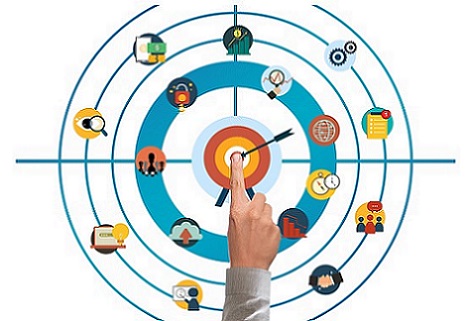According to a study by the Harvard Business Review, emotionally engaged customers are at least three times more likely to recommend a product or service and to repurchase it themselves1. According to Forrester’s brand energy framework that was introduced in 2017, about 50% of a brand’s ‘energy’ comes from ‘emotions’2.
We have always known that how people feel about a brand impacts their purchasing decisions and brand loyalty. Research has now helped quantify just how much of an impact emotions can have on consumer perception. This is why it is crucial for all businesses in Trinidad & Tobago to be aware of emotional branding.
Understanding this concept will help you be more effective with your brand development marketing and build stronger relationships with customers.
What is emotional branding?
Emotional branding is a marketing strategy that aims to create a deep and lasting emotional connection between a brand and its customers. This is achieved by tapping into customers’ emotions, aspirations, and values, and aligning them with the brand’s messaging, values, and personality. seeks to create a positive perception of the brand in customers’ minds, which can lead to increased loyalty, advocacy, and long-term relationships.

Emotional branding is often used by brands that want to differentiate themselves from competitors and increase customer engagement and retention.
6 emotions that garner the strongest consumer reactions
1. Happiness: Happiness is a positive emotion that is associated with pleasure, joy, and satisfaction. Brands that can create experiences that make customers happy, such as through humor, nostalgia, or personalisation, can generate strong positive reactions and build emotional connections with their customers.
2. Trust: Trust is an emotion that is associated with reliability, honesty, and integrity. Brands that can create trust with their customers, such as through transparency, authenticity, and consistent messaging, can generate strong positive reactions and build long-term relationships.
3. Fear: Fear is a negative emotion that is associated with danger, uncertainty, and risk. While fear can be a powerful emotion, it should be used with caution in marketing. Brands that use fear to create urgency or emphasize the consequences of not taking action can generate strong reactions, but it’s important to balance this with a sense of safety and security.
4. Excitement: Excitement is a positive emotion that is associated with enthusiasm, energy, and anticipation. Brands that can create excitement with their customers, such as through new product launches, exclusive experiences, or unique promotions, can generate strong positive reactions and build buzz and anticipation around their brand.
5. Empathy: Empathy is an emotion that is associated with understanding, compassion, and connection. Brands that can demonstrate empathy with their customers, such as through personalised messaging, social responsibility, or community building, can generate strong positive reactions and build emotional connections with their customers.
6. Surprise: Surprise is an emotion that is associated with unexpectedness, novelty, and delight. Brands that can create surprise with their customers, such as through unexpected rewards, special promotions, or unique product features, can generate strong positive reactions and build emotional connections with their customers.
By understanding the emotions that get the highest consumer reactions, brands can create marketing and brand development strategies that resonate with their customers to create strong emotional connections that lead to increased loyalty, advocacy, and growth.

Examples of effective emotional branding campaigns
Effective emotional branding campaigns are those that resonate with customers on a deep and personal level, creating a lasting emotional connection. Here are two examples of such campaigns:
1. Nike’s “Just Do It” Campaign:
Nike’s “Just Do It” campaign is one of the most iconic and effective emotional branding campaigns in history. The campaign, which began in 1988, has evolved over the years, but the core message has remained the same: anyone can achieve greatness if they have the courage to pursue their dreams.
The campaign has been successful because it taps into the emotions of determination, perseverance, and overcoming obstacles. Nike’s ads feature athletes who have overcome adversity and achieved greatness, inspiring viewers to do the same. The “Just Do It” slogan has become synonymous with the Nike brand, and it has helped to create a strong emotional connection between Nike and its customers.
2. Coca-Cola’s “Share a Coke” Campaign:
Coca-Cola’s “Share a Coke” campaign is another example of effective emotional branding. The campaign, which began in 2011, involved replacing the Coca-Cola logo on bottles and cans with 250 of the most popular names in the United States. The campaign encouraged people to share a Coke with someone they care about, and it tapped into the emotions of friendship and sharing.
The campaign was successful because it created a personal connection between the brand and its customers. By featuring popular names on the bottles and cans, Coca-Cola made customers feel like the brand was speaking directly to them. The campaign also encouraged customers to share their experiences on social media, further strengthening the emotional connection between the brand and its customers.
In conclusion, effective emotional branding campaigns are those that tap into the emotions of customers and create a deep and personal connection between the brand and its audience. Nike’s “Just Do It” and Coca-Cola’s “Share a Coke” campaigns are two excellent examples of this.
Webfx is one of Trinidad and Tobago’s leading brand development agencies. Contact us to learn more about how you can establish and grow your brand.
Sources:
- Sep 2016, T. Litsa, “How emotional connection increases customer satisfaction”, ClickZ, [available online], available from: https://www.clickz.com/how-emotional-connection-increases-customer-satisfaction/105775/, [accessed Apr 23]
- Jul. 2017, D. Chatterjee, “Introducing Forrester’s New Brand Energy Framework – Emotions Fuel Your Brand’s Energy”, Forrester, [available online], available from: https://www.forrester.com/blogs/17-07-18-introducing_forresters_new_brand_energy_framework_emotions_fuel_your_brands_energy/, [accessed Apr 23]
